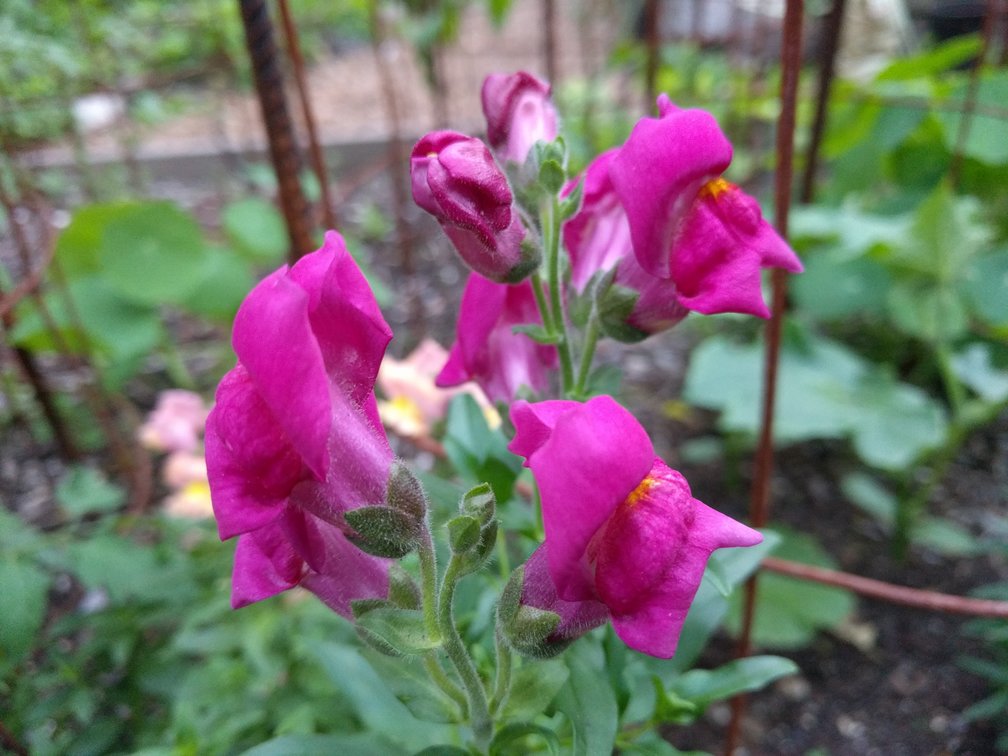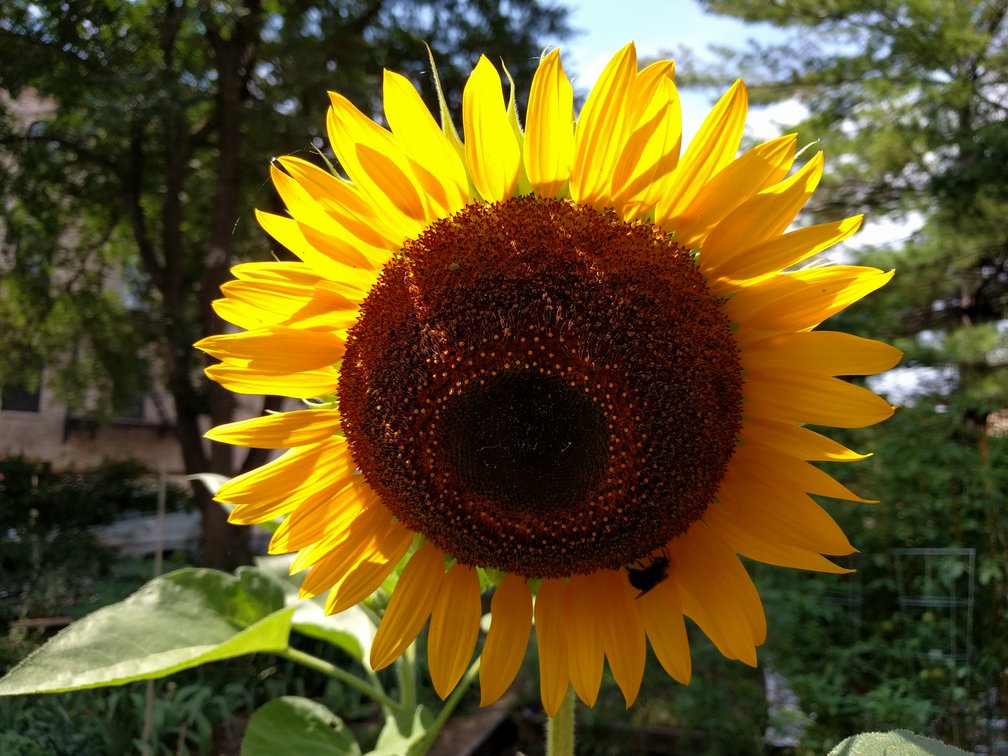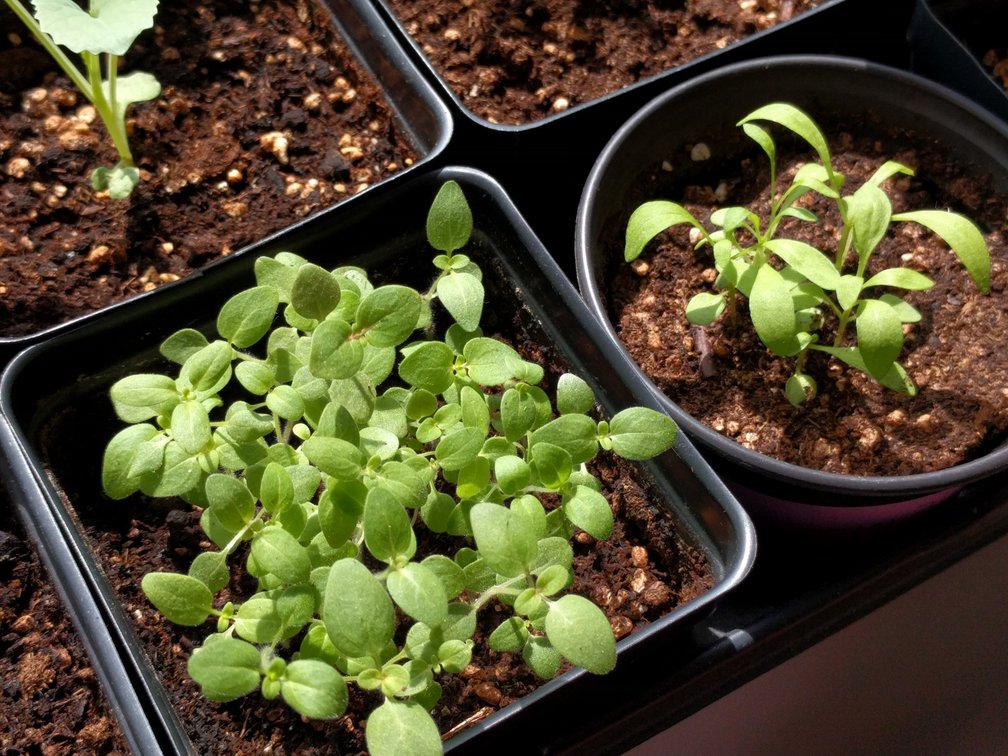Disclosure: I'm in USDA Plant Hardiness Zone 7b. Not all may be applicable to you.
June 2018

Snapdragon - I always thought snapdragons were annual until I started growing them from seeds myself. To my surprise, they were extremely cold tolerant. First, I noticed that their foliage remained dark green well into late fall and early winter. I didn't think much of it until the next spring when they bounced back to full life with even more vibrant colors! That being said, they don't like heat so water them well in the summer or grow them in partial shade. Direct sow is probably not reliable but it's quite easy to grow from seeds indoor then transplant. Note that its seedlings are extremely thin, but don't underestimate any seedling's resilience. As always, deadhead or cut back in the summer to promote more blooms. Supposedly snapdragon derives its name from the shape of its flower that resembles the face of a dragon opening and closing its mouth when squeezed. I don't see the point but I do think they look lovely growing alongside my veggies as opposed to a more formal landscaped setting. I hope the bees agree and come to pollinate too. Long live the snapdragon!
August 2017

Cucumber and Sunflower - I cannot think of anything else that's easier to grow than cucumber and sunflower - direct sow in a sunny spot after the soil is warm, that usually means around May 15th on the East Coast of the United States. Re-sow if the seeds rot after too much rain in a row, again, an increasingly common occurrence due to global warming and extreme weather. You need to water the cucumber regularly for best results but you can be more relaxed with the sunflower, which is drought tolerant. I prune side shoots and older cucumber leaves off to redirect plant energy into cucumber production. A lesser known fact about the sunflower is its amazing ability to extract heavy metals and toxic ingredients from the soil in a process called "phytoremediation". Just don't forget to dispose the spent sunflowers in a trash can, not your compost bins. On the other hand, a typical problem with the sunflowers is that they grow too tall (easily exceed five feet) and shade other plants. So choose your spot carefully. If you are short on space in an urban plot like me and you provide support, the tendrils of the cucumber will grab hold of anything it can, even leaves, like a cowboy that lassos, to climb up and out in all directions. Because the fruits will be hanging while growing, you'll get slender, normal looking cucumbers. Otherwise, the cucumber plant will sprawl and the fruits will grow lying on the ground. This way, you will get chubby cucumbers. In addition to attracting pollinators like bees, sunflowers also serve a dual purpose for me. I grow cucumber under a tomato cage and sunflowers next to it so the cucumber can use the sunflowers to anchor and spread outward, and I can use the sunflowers as cut flowers. Since they are both fast growing and mostly pest and disease-free from my experience, I cannot think of anything else that's better as a pair.
April 2017

Seed and Seedling - Even for a "young" gardener like me, I notice the drastic shift in the weather pattern on the East coast of the United States in the past three years. There has been unseasonably warm weather in February, followed by cold snaps in March or early April. Trees and plants are inevitably confused and damaged. Spring brings incessant rains. Summer follows with violent gusts, torrential rainstorms and unbearable humidity for humans and plants alike. Despite these challenges, plants and gardeners forge on. I grow seedlings indoor as early as late February on my windowsills with good sun exposure. Good sources of seeds for me are Christmas Tree Shop and local Chinese or Asian supermarkets. Christmas Tree Shop offers seeds starting at 50% off list price and discounts down to 75% at the end of spring. Chinese vegetable seeds imported from Asia usually come with no dates on the packet. For the most part, seed packets are dated for marketing purposes and vegetable seeds are usually good for at least three years. Some people refrigerate their seeds to prolong the seeds' useful life. I don't. And I have no major issues with germination rate. Well, if seedlings don't emerge when they are supposed to, sow more! Don't toss the seeds out! As an apartment dweller, "hardening-off" seedlings is not something convenient for me to do. I simply open the window sometimes to give seedlings a chance to acclimate. Science has shown that wind or a jiggle that mimics the wind will stimulate seedling growth. From my experience, the first things you can transplant are Parsley and Chinese vegetables. They are exceptionally cold tolerant, as long as there's no ice and snow. Always put compost or organic fertilizer at the root when you transplant. Organic matters are most beneficial to plants in the soil not on top. I add coffee ground and crushed eggshells (rinse thoroughly) to my soil periodically for added nitrogen and calcium. Now, hello world, here we (the seedlings) come!